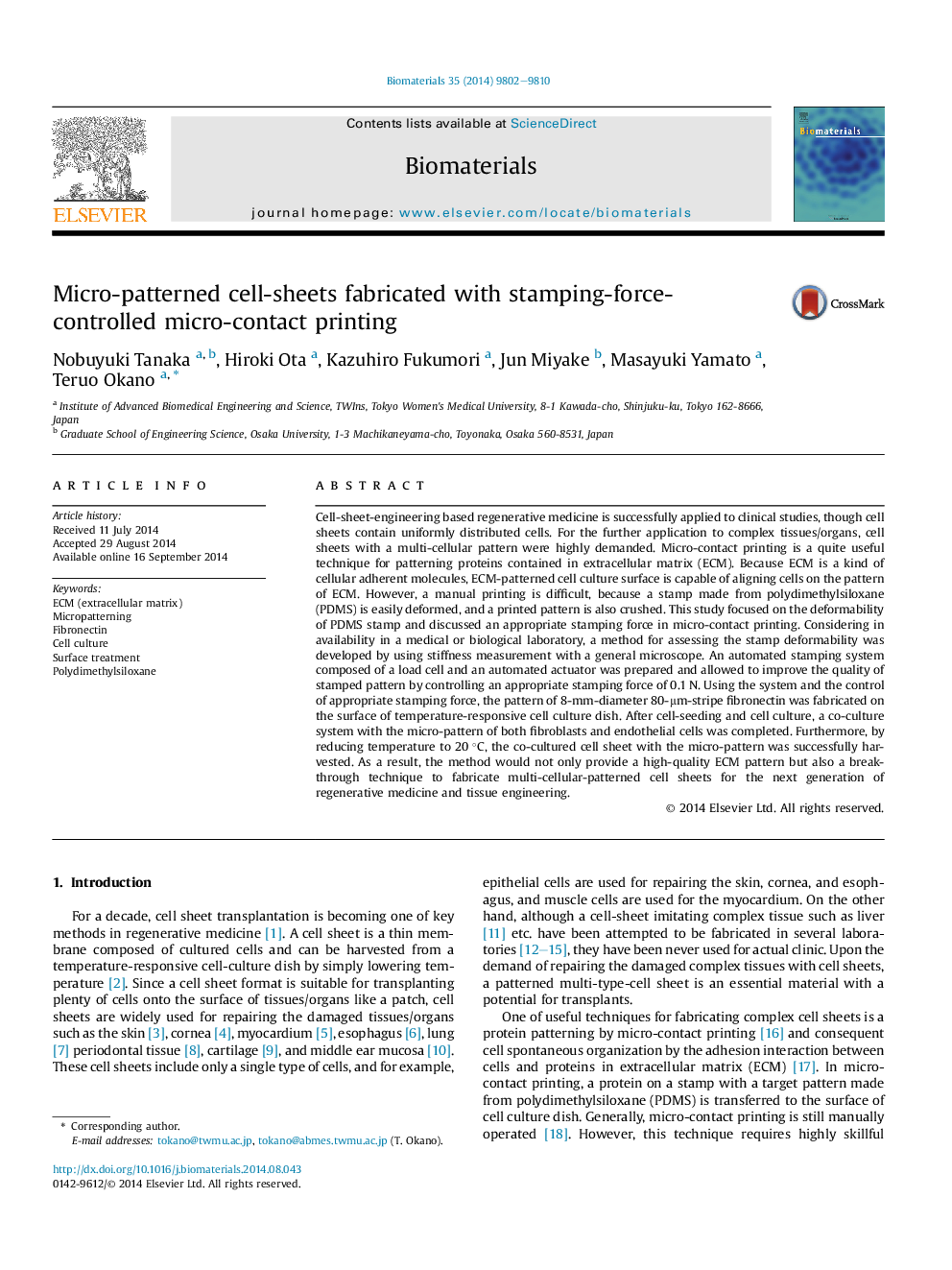| Article ID | Journal | Published Year | Pages | File Type |
|---|---|---|---|---|
| 5943 | Biomaterials | 2014 | 9 Pages |
Cell-sheet-engineering based regenerative medicine is successfully applied to clinical studies, though cell sheets contain uniformly distributed cells. For the further application to complex tissues/organs, cell sheets with a multi-cellular pattern were highly demanded. Micro-contact printing is a quite useful technique for patterning proteins contained in extracellular matrix (ECM). Because ECM is a kind of cellular adherent molecules, ECM-patterned cell culture surface is capable of aligning cells on the pattern of ECM. However, a manual printing is difficult, because a stamp made from polydimethylsiloxane (PDMS) is easily deformed, and a printed pattern is also crushed. This study focused on the deformability of PDMS stamp and discussed an appropriate stamping force in micro-contact printing. Considering in availability in a medical or biological laboratory, a method for assessing the stamp deformability was developed by using stiffness measurement with a general microscope. An automated stamping system composed of a load cell and an automated actuator was prepared and allowed to improve the quality of stamped pattern by controlling an appropriate stamping force of 0.1 N. Using the system and the control of appropriate stamping force, the pattern of 8-mm-diameter 80-μm-stripe fibronectin was fabricated on the surface of temperature-responsive cell culture dish. After cell-seeding and cell culture, a co-culture system with the micro-pattern of both fibroblasts and endothelial cells was completed. Furthermore, by reducing temperature to 20 °C, the co-cultured cell sheet with the micro-pattern was successfully harvested. As a result, the method would not only provide a high-quality ECM pattern but also a breakthrough technique to fabricate multi-cellular-patterned cell sheets for the next generation of regenerative medicine and tissue engineering.
